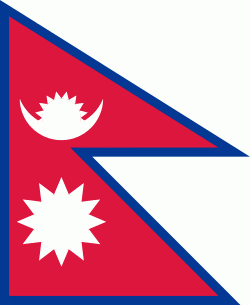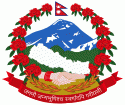Patan (Lalitpur)
Lalitpur Metropolitan City, historically Patan (पाटन Pāṭana, Nepal bhasa : Yela, ), is the fourth most populous city of Nepal after Kathmandu, Pokhara and Bharatpur, and it is located in the south-central part of Kathmandu Valley, a new metropolitan city of Nepal. Lalitpur is also known as Manigal. It is best known for its rich cultural heritage, particularly its tradition of arts and crafts. It is city renowned for its festival and feast, fine ancient art, and the making of metallic, wood and stone carved statues. At the time of the 2011 Nepal census it had a population of 226,728 in 54,748 individual households. The city received extensive damage from an earthquake on 25 April 2015.
Lalitpur is on the elevated tract of land in Kathmandu Valley on the south side of the Bagmati River, which separates it from the city of Kathmandu on the northern and western side. The Karmanasa Khola acts as the boundary on the eastern side. It was developed on relatively thin layers of deposited clay and gravel in the central part of a dried ancient lake known as the Nagdaha.
The city has an area of 15.43 square kilometres and is divided into 29 municipal wards. It is bounded by:
* East: Mahalaxmi Municipality
* West: Kirtipur (Kirat Kingdom of Yalamber Clan) Municipality and Kathmandu Metropolitan City (KMC)
* North: Kathmandu Metropolitan City (KMC)
* South: Godawari Municipality.
Lalitpur is on the elevated tract of land in Kathmandu Valley on the south side of the Bagmati River, which separates it from the city of Kathmandu on the northern and western side. The Karmanasa Khola acts as the boundary on the eastern side. It was developed on relatively thin layers of deposited clay and gravel in the central part of a dried ancient lake known as the Nagdaha.
The city has an area of 15.43 square kilometres and is divided into 29 municipal wards. It is bounded by:
* East: Mahalaxmi Municipality
* West: Kirtipur (Kirat Kingdom of Yalamber Clan) Municipality and Kathmandu Metropolitan City (KMC)
* North: Kathmandu Metropolitan City (KMC)
* South: Godawari Municipality.
Map - Patan (Lalitpur)
Map
Country - Nepal
 |
 |
| Flag of Nepal | |
The name "Nepal" is first recorded in texts from the Vedic period of the Indian subcontinent, the era in ancient Nepal when Hinduism was founded, the predominant religion of the country. In the middle of the first millennium BC, Gautama Buddha, the founder of Buddhism, was born in Lumbini in southern Nepal. Parts of northern Nepal were intertwined with the culture of Tibet. The centrally located Kathmandu Valley is intertwined with the culture of Indo-Aryans, and was the seat of the prosperous Newar confederacy known as Nepal Mandala. The Himalayan branch of the ancient Silk Road was dominated by the valley's traders. The cosmopolitan region developed distinct traditional art and architecture. By the 18th century, the Gorkha Kingdom achieved the unification of Nepal. The Shah dynasty established the Kingdom of Nepal and later formed an alliance with the British Empire, under its Rana dynasty of premiers. The country was never colonised but served as a buffer state between Imperial China and British India. Parliamentary democracy was introduced in 1951 but was twice suspended by Nepalese monarchs, in 1960 and 2005. The Nepalese Civil War in the 1990s and early 2000s resulted in the establishment of a secular republic in 2008, ending the world's last Hindu monarchy.
Currency / Language
| ISO | Currency | Symbol | Significant figures |
|---|---|---|---|
| NPR | Nepalese rupee | ₨ | 2 |
| ISO | Language |
|---|---|
| EN | English language |
| NE | Nepali language |















